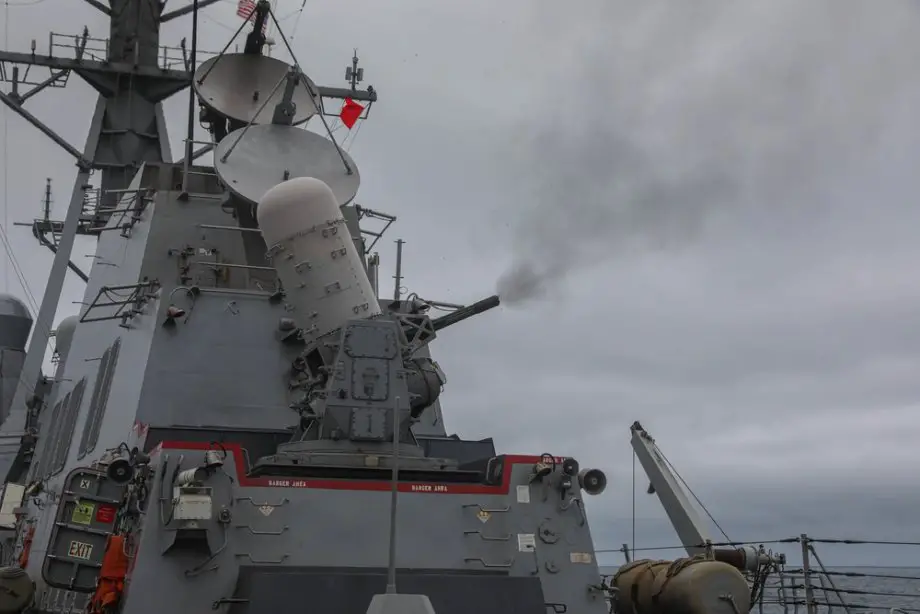According to information published by CNN on February 1, 2024, the Arleigh Burke class destroyer USS Gravely, narrowly avoided a missile strike by the Houthis in the Red Sea, marking the closest such encounter yet. The missile, intercepted just a mile away, necessitated the use of the ship's Close-In Weapon System (CIWS) for defense.
Follow Navy Recognition on Google News at this link
 Arleigh Burke class destroyer USS Gravely firing a close-in weapons system. (Picture source: US DoD)
Arleigh Burke class destroyer USS Gravely firing a close-in weapons system. (Picture source: US DoD)
The USS Gravely, an Arleigh Burke-class destroyer, encountered a situation where its Aegis system did not intercept a Houthi missile at long range as might be expected. Instead, the missile approached within one mile of the warship before being shot down by the ship's close-in weapon system (CIWS).
Typically, warships like the USS Gravely use their SM-2 or SM-3 interceptors, which are fired from vertical launch system cells to intercept and destroy airborne threats at longer ranges. These interceptors have been effective in previous engagements.
The fact that the missile got within one mile of the USS Gravely suggests a lapse in the earlier defensive layers that are designed to intercept such threats. However, the exact reasons for this lapse are not detailed in the available reports.
It could be due to a range of factors, including the missile's flight profile, electronic countermeasures, or operational conditions at the time. The CIWS, which is a close-range, radar-guided automatic cannon, ultimately succeeded in shooting down the missile, preventing any damage or casualties.
Phalanx CIWS
The Phalanx Close-In Weapon System (CIWS) is a fast-reaction, rapid-fire 20mm gun system used by multiple navies around the world for short-range defense against airborne threats, including anti-ship missiles and aircraft.
Developed by the General Dynamics Corporation for the United States Navy, the Phalanx CIWS is a self-contained package consisting of radar, a computer, and a 20mm M61 Vulcan Gatling gun mounted on a swiveling base.
The Phalanx CIWS operates by using a search radar to detect incoming threats. Once a threat is detected, a tracking radar locks onto the target. The system's computer then calculates the optimum firing solution to intercept the target. The Vulcan Gatling gun, capable of firing over 4,500 rounds per minute, unleashes a barrage of armor-piercing tungsten rounds towards the incoming missile or aircraft.



